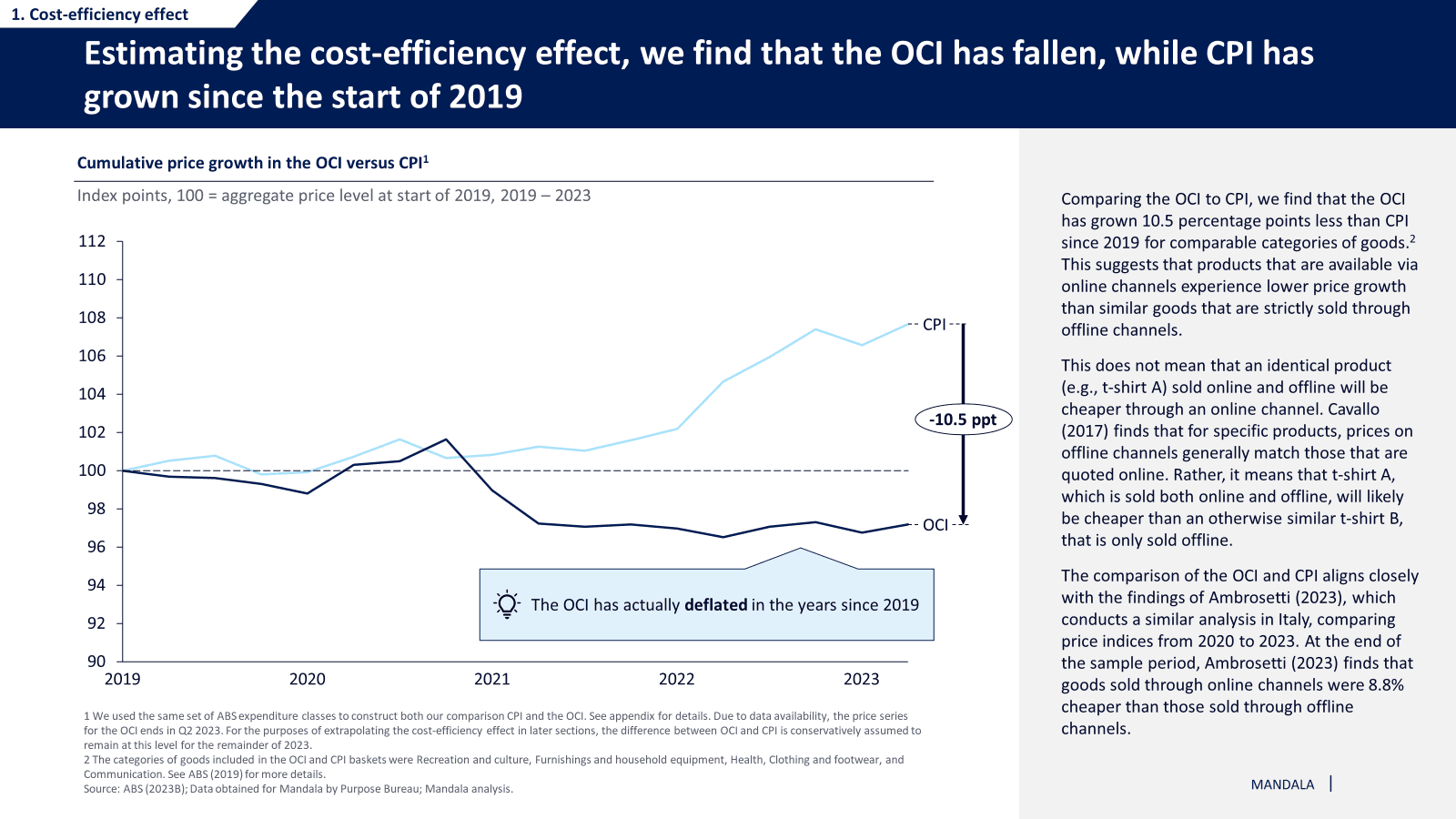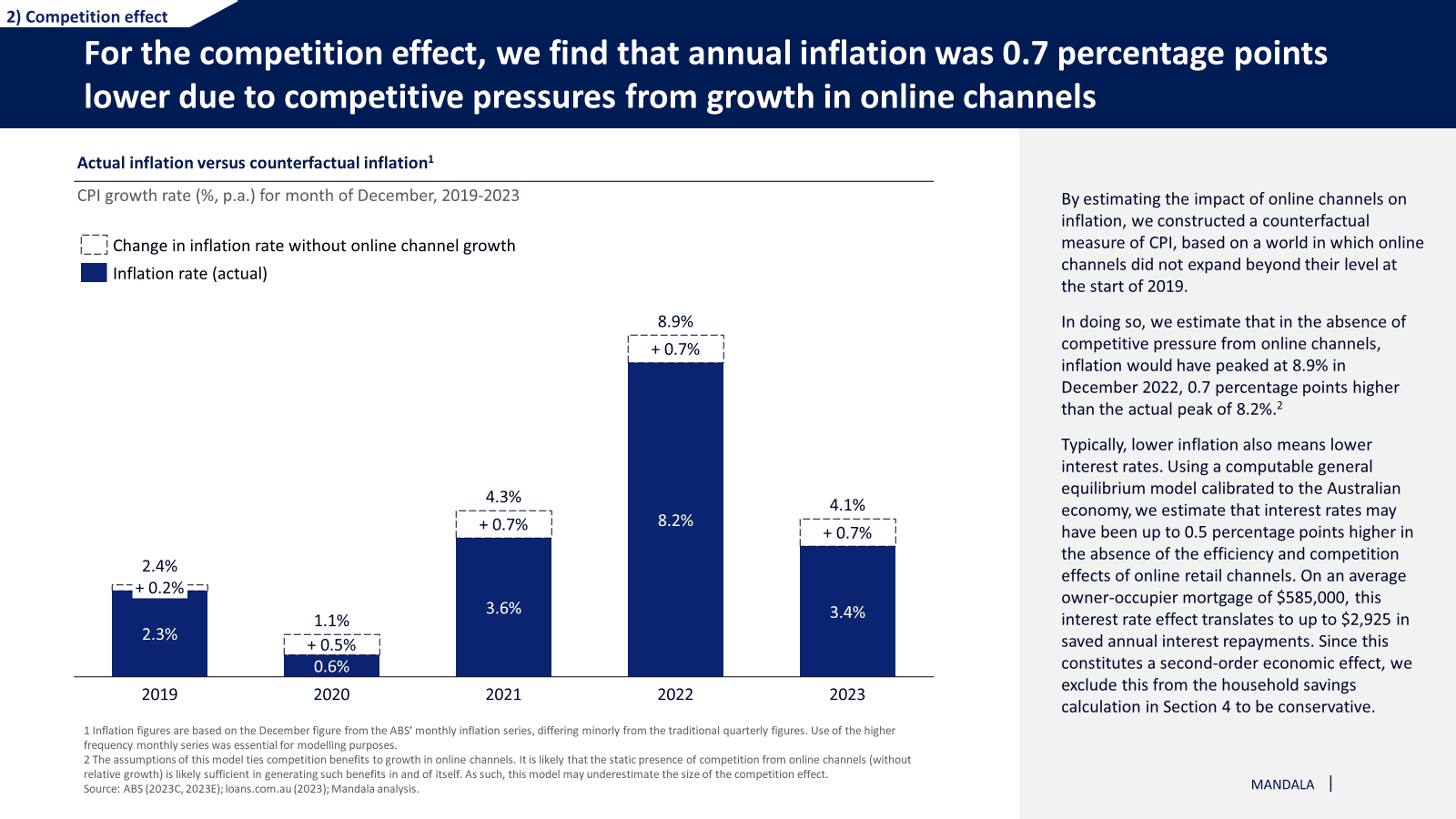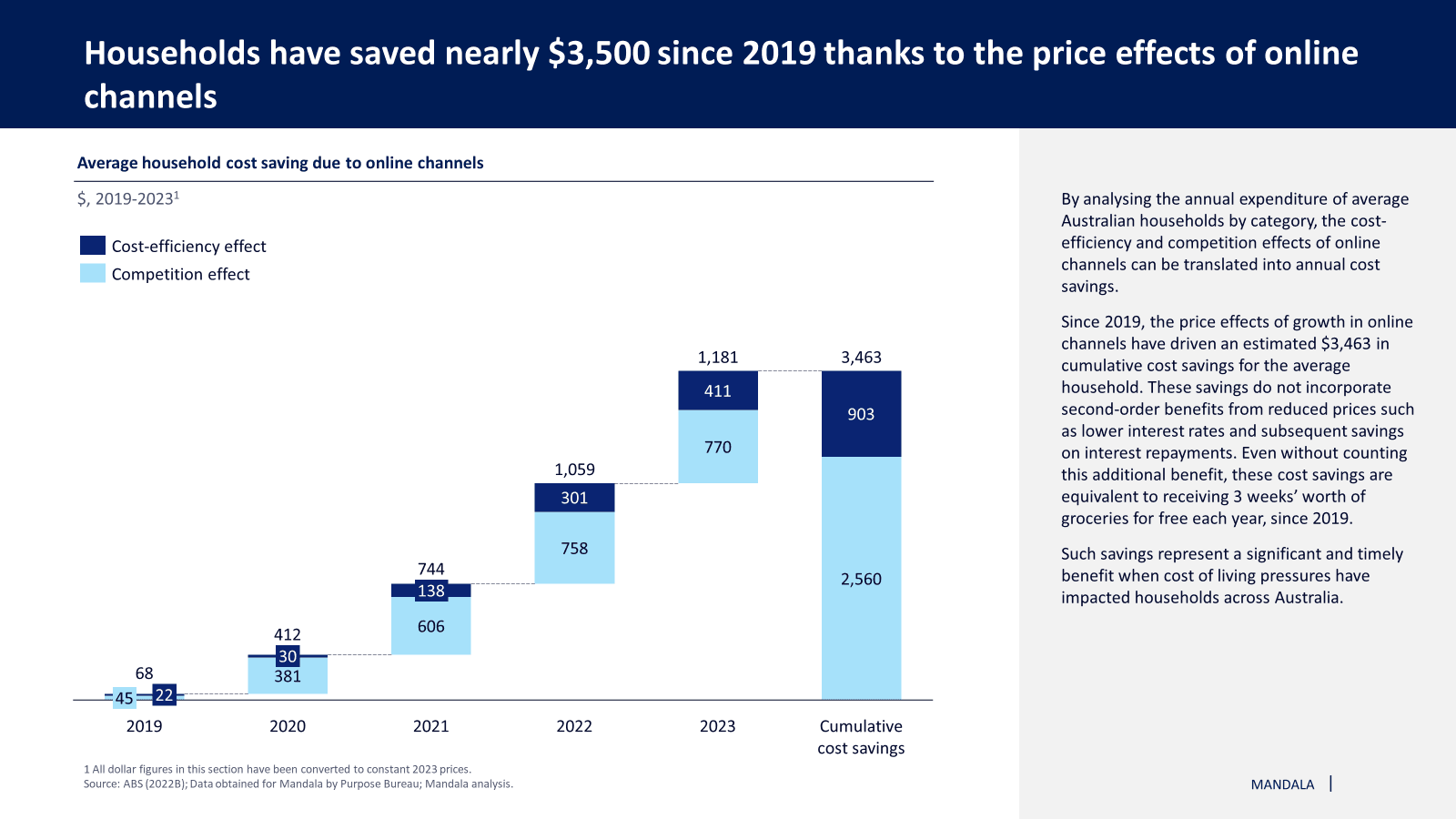
Surf, Shop, Save
28.02.2024 - 01:12
Our new report ‘Surf, Shop, Save’, commissioned by Amazon, explores how online channels have helped to lower the cost of living in Australia. Our report finds that online channels have helped reduce the cost of living pressures for Australians through cost-efficiency and competition effects. Since 2019, prices for online channels have been deflationary, while CPI has grown. When compared to each other, CPI has grown 10.5 percentage points more than prices for online channels for comparable categories of goods. During this time, online channels have also placed downward pressure on prices quoted by offline channels, helping reduce inflation by 0.7 percentage points during its peak in 2022. These effects saved Australian households nearly $3,500 on average since 2019.
Online channels help reduce cost of living pressures for Australians through cost-efficiency and competition effects
The retail sector consists of online and offline channels, with retailers using a mix of both to reach consumers, often within a single purchase journey.
Within this omnichannel retail sector, the cost-efficiency effect of online channels sees the cost savings from reduced handling and improved distribution being passed-on to consumers in the form of competitive prices. The competition effect of online channels sees reduced prices across the broader retail sector due to increased competition and increased consumer choice. This allows consumers to shop around for the best price.
Since 2019, prices for online channels have been deflationary, while CPI has grown
To estimate the cost-efficiency effect, we analysed a sample of over 60,000 distinct products from online channels, creating a time series of prices from 2019 to 2023. Using this data, we constructed an ‘Online Channels Index’ (OCI) and compared each category of the OCI (e.g., clothing and footwear) to the corresponding sub-group of the ABS’ Consumer Price Index (CPI).
Comparing the OCI to CPI, we find that the OCI has grown 10.5 percentage points less than CPI since 2019 for comparable categories of goods. This indicates that products that are available via online channels experience lower price growth than similar goods that are strictly sold through offline channels.

Annual inflation in Australia was 0.7 percentage points lower than it would otherwise have been thanks to the competition effect of online channels

Online retail channels have also placed downward pressure on prices quoted by offline channels. Without online channels, inflation in Australia would have been 0.7 percentage points higher during its peak in 2022.
Households have saved nearly $3,500 on average since 2019 thanks to online channels

Since 2019, Australian households have saved almost $3,500 on average due to online channels. Just over a quarter of this (26 per cent) was due to the cost-efficiency effect of online channels, and the remaining 74 per cent was due to the competition effect. The largest cost saving was from expenditure on recreation and culture.
Read the full report here.
Read our latest posts

Optimising Australia’s Specialist Investment Vehicles for the Net Zero Journey
Mandala, in partnership with IGCC, explores how Australia’s Specialist Investment Vehicles (SIVs) are deploying public capital to accelerate the net zero transition. The report examines the current funding landscape, identifies structural challenges that limit the effectiveness of public investment, and sets out a pathway to evolve the SIV system into a more coordinated, capital-led model aligned with national priorities.
10 Dec, 2025

$160 billion and counting: The cost of Commonwealth regulatory complexity
Our latest research for the Australian Institute of Company Directors (AICD) reveals Australia’s growing regulatory burden. The cost to businesses of complying with federal regulation has risen to $160 billion (5.8 per cent of GDP), up from $65 billion (4.2 per cent of GDP) in 2013. More complex laws are contributing to the increase in costs and redirecting business resources away from growth and innovation. Board time on compliance has doubled from 24 percent to 55 percent in 10 years, while the external legal spend now sits at $16bn up from $6bn in 2010. While the UK, EU, Canada, New Zealand and US are simplifying regulation to drive growth, Australia risks falling further behind without taking immediate policy action.
2 Dec, 2025

Data Centres as Enabling Infrastructure
Mandala’s latest research, commissioned for Data Centres Australia by AirTrunk, Amazon Web Services, CDC Data Centres and NEXTDC, shows that data centres are key drivers of economic growth, renewable energy investment, and sustainable water solutions. The report finds that data centres use relatively modest amounts of energy and water while generating significant economic value, investing in power and water infrastructure that benefits communities, and helping to accelerate Australia’s clean energy transition.
25 Nov, 2025

Attracting international capital
International investment has powered Australia's property sector, with international investors providing $1 in every $3 of institutional property investment over the past ten years. Yet in recent years, Victoria and Queensland have introduced additional taxes on these investors. This report examines a critical question: are these taxes deterring the investment Australia needs to build cities, create jobs, and support economic growth? Commissioned by the Property Council of Australia, the analysis reveals that Victoria has seen global institutional investment plummet by 53% since 2022, coinciding with rising tax rates. Queensland shows similar stagnation despite strong economic conditions. Through economic modelling and case studies of stalled projects - from student accommodation to industrial estates - the report quantifies what removing these surcharges could mean for Australia's economic future and competitiveness in attracting international capital.
24 Nov, 2025